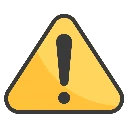

Mastering the West Coast EMT Block 4 Exam: Essential Study Questions with Expert Verified Answers
Emergency Medical Technicians (EMTs) play an integral role in pre-hospital care, responding to life-threatening situations with speed and precision. Aspiring EMTs must clear multiple evaluations to earn their certification, with the West Coast EMT Block 4 Exam being one of the most crucial. This comprehensive test assesses critical medical knowledge, patient assessment skills, and scenario-based decision-making. Success on this exam requires focused study, an understanding of complex medical conditions, and familiarity with the latest protocols.
This guide offers expert-verified study questions and answers to help you achieve a passing score. Whether you are searching for a West Coast EMT Block 4 exam quizlet, EMT Block 4 quiz, or a West Coast EMT final study guide, this article provides the tools needed for success.
Understanding the West Coast EMT Block 4 Exam
The West Coast EMT Block 4 Exam covers a broad range of topics, including medical emergencies, trauma care, airway management, and pharmacology. A well-structured study plan should integrate practical applications with theoretical knowledge.
Before diving into study questions, it’s essential to understand the structure of the exam. This test is designed to challenge students on:
-
Signs and symptoms of common medical emergencies
-
Advanced airway management techniques
-
Pharmacological interventions
-
Trauma assessment protocols
-
Cardiopulmonary resuscitation (CPR) and defibrillation
Each question in the exam aims to assess the ability to apply EMT knowledge in real-world scenarios. Understanding these concepts thoroughly will enhance your chances of excelling.
Key Study Areas for the West Coast EMT Block 4 Exam
1. Respiratory Emergencies
The respiratory system is a crucial focus area, and students should be well-versed in the signs and symptoms of conditions like:
-
Asthma – Wheezing, dyspnea, and prolonged expiratory phase.
-
Chronic Obstructive Pulmonary Disease (COPD) – Barrel chest, pursed-lip breathing, and cyanosis.
-
Pneumothorax – Sudden onset of dyspnea, decreased breath sounds, and tracheal deviation.
A strong grasp of airway management techniques, such as bag-valve-mask ventilation and non-rebreather mask application, is essential for excelling in this section.
2. Cardiovascular Emergencies
Mastering the signs and symptoms of cardiac conditions can make or break your success in this exam. Key topics include:
-
Myocardial Infarction (MI) – Chest pain radiating to the left arm or jaw, diaphoresis, and nausea.
-
Congestive Heart Failure (CHF) – Pulmonary edema, pink frothy sputum, and crackles on auscultation.
-
Shock States – Hypotension, altered mental status, and weak peripheral pulses.
Familiarizing yourself with protocols for defibrillation, chest compressions, and medication administration (such as nitroglycerin and aspirin) is imperative.
3. Neurological Emergencies
The ability to recognize and manage neurological disorders is a frequent focus of the West Coast EMT final exam. Some critical conditions to study include:
-
Stroke (CVA) – Facial drooping, slurred speech, and unilateral weakness.
-
Seizures – Generalized tonic-clonic activity, postictal confusion, and incontinence.
-
Hypoglycemia – Altered mental status, diaphoresis, and tachycardia.
Practicing patient assessment techniques like the Cincinnati Stroke Scale can help solidify your understanding of neurological emergencies.
4. Trauma Management
Handling traumatic injuries correctly is another crucial part of the West Coast EMT quizlet review. The test often includes questions about:
-
Head injuries – Decerebrate or decorticate posturing, unequal pupils, and Cushing’s triad.
-
Spinal trauma – Loss of motor or sensory function and priapism.
-
Bleeding control – The appropriate use of tourniquets, hemostatic agents, and direct pressure.
Scenario-based questions may assess your ability to determine the mechanism of injury and appropriate transport decisions.
5. Pharmacology and Medication Administration
Medications are frequently tested, and understanding their indications, contraindications, and side effects is critical. Key medications include:
-
Epinephrine – Used for anaphylaxis; causes vasoconstriction and bronchodilation.
-
Naloxone (Narcan) – Used for opioid overdose; reverses respiratory depression.
-
Albuterol – A bronchodilator commonly used for asthma and COPD exacerbations.
Being proficient in medication administration routes (e.g., intramuscular, sublingual, inhaled) is equally important.
Expert-Verified Study Questions
Below are some expert-verified questions to enhance your study sessions:
1. A 55-year-old male is experiencing crushing substernal chest pain. What should be your first intervention?
A) Administer 324 mg aspirin orally
B) Apply high-flow oxygen
C) Perform a rapid trauma assessment
D) Initiate immediate transport
Answer: A – Administering aspirin can reduce mortality in acute myocardial infarction.
2. A patient presents with confusion, excessive sweating, and tachycardia. What condition is most likely?
A) Stroke
B) Hyperglycemia
C) Hypoglycemia
D) Seizure
Answer: C – Hypoglycemia often presents with these symptoms.
3. What is the best way to manage an open chest wound?
A) Apply a bulky dressing
B) Use an occlusive dressing taped on three sides
C) Leave the wound open to allow drainage
D) Pack the wound with sterile gauze
Answer: B – This technique prevents tension pneumothorax by allowing trapped air to escape.
Resources for Additional Study
For those seeking more study materials, platforms such as West Coast EMT final exam Reddit, West Coast EMT quizlet, and online study groups provide invaluable peer support and additional practice questions. Additionally, investing in a West Coast EMT final study guide can offer structured content review.
Final Thoughts
Passing the West Coast EMT Block 4 Exam requires more than just memorization—it demands critical thinking, practical application, and a deep understanding of medical protocols. Utilizing expert-verified study questions, reinforcing knowledge through quizlets, and participating in study discussions can significantly improve your exam performance.
Commit to consistent study habits, focus on real-world application, and approach the exam with confidence. With thorough preparation, achieving a high score and securing your EMT certification is well within reach.
Below are sample Questions and Answers:
Following a blunt injury to the head, a 22-year-old female is confused and complains of a severe
headache and nausea. On the basis of these signs and symptoms, you should be MOST
concerned with the possibility of:
Select one:
A. a fracture of the skull.
B. airway compromise.
C. intracranial bleeding.
D. spinal cord injury. ✔Ans✔ C. intracranial bleeding.
Your presence is requested by law enforcement to assess a 33-year-old female who was
sexually assaulted. The patient is conscious and obviously upset. As you are talking to her, you
note an impressive amount of blood on her clothes in the groin area. Her blood pressure is
98/58 mm Hg, her pulse is 130 beats/min, and her respirations are 24 breaths/min. You should:
Select one:
A. visualize the vaginal area and pack the vagina with sterile dressings.
B. control any external bleeding, administer oxygen, and transport at once.
C. allow her to change her clothes and take a shower before you transport.
D. arrange for a rape crisis center representative to speak with the patient. ✔Ans✔ B. controlany
external bleeding, administer oxygen, and transport at once.
You respond to a residence for a 40-year-old female who was assaulted by her husband; the
scene has been secured by law enforcement. Upon your arrival, you find the patient lying
supine on the floor in the kitchen. She is semiconscious with severely labored breathing.
Further assessment reveals a large bruise to the left anterior chest, jugular venous distention,
and unilaterally absent breath sounds. As your partner is supporting her ventilations, you
should:
Select one:
A. perform a focused secondary exam.
B. insert an oropharyngeal airway.
C. immediately request ALS support.
D. obtain a set of baseline vital signs. ✔Ans✔ C. immediately request ALS support.
| Category | Study Material |
| Comments | 0 |
| Rating | |
| Sales | 0 |
Buy Our Plan





















